Celestron Labs CM1000C Handleiding
Celestron
Miscroscoop
Labs CM1000C
Bekijk gratis de handleiding van Celestron Labs CM1000C (8 pagina’s), behorend tot de categorie Miscroscoop. Deze gids werd als nuttig beoordeeld door 57 mensen en kreeg gemiddeld 4.6 sterren uit 29 reviews. Heb je een vraag over Celestron Labs CM1000C of wil je andere gebruikers van dit product iets vragen? Stel een vraag
Pagina 1/8

English
Congratulations on your Celestron Labs
microscope purchase. Your new Celestron
Labs microscope is a precision optical
instrument, made of the highest quality
materials to ensure durability and long
life. It is designed to give you a lifetime of
enjoyment with minimal maintenance.
This CL-CM1000C microscope provides
powers from 40x up to 1000x. It is ideal for
examining specimen slides of yeasts and
molds, cultures, plant and animal parts,
fibers, bacteria, etc.
Before attempting to use your Celestron
Labs microscope, please read these
instructions to familiarize yourself with
the parts and functions of the microscope.
Refer to the microscope diagrams to locate
the parts discussed in the manual. The final
section of the manual provides simple care
and maintenance tips.
IN THE BOX
- Microscope CM1000C
- 3 objective lenses: 4x, 10x, 40x
(spring-loaded)
- 2 Eyepieces: 10x, 25x
- AC Adapter
- 10 Prepared Slides
- 3 AA Batteries
- Dust Cover
- Hex Key
PARTS
1. Eyepiece
2. Eyepiece Tube
3. Head
4. Nosepiece
5. Objective Lens
6. Stage
7. Stage Clips
8. Illuminator
9. Base
10. Illuminator Adjustment
11. Arm
12. Coaxial Focus Knob
13. Disc Diaphragm
14. Power Switch
SPECIFICATIONS
STAGE: Plain Stage with Clips –
3.5 in x 3.5 in (88 mm x 88 mm)
HEAD: 360° rotatable monocular with 45°
incline
MAGNIFICATION RANGE: 40x to 1000x
FOCUSER: Coaxial, coarse/fine focus knob
OBJECTIVES: 4x, 10x, 40x
EYEPIECES: WF 10x, WF 25x
NOSEPIECE: Triple with click stop
ILLUMINATOR: LED, adjustable
CONDENSER: N.A. 0.65
DIAPHRAGM: Disc diaphragm with 6
aperture sizes
DIMENSIONS: 4.6 in x 6.3 in x 12.0 in
(117 mm x 160 mm x 305 mm)
WEIGHT: 3 lbs.- 14 oz / 1.76 kg
MAGNIFICATION TABLE
Use the following table to determine
magnification using your microscope’s
different eyepiece/objective lens
combinations.
OBJECTIVE LENS:
4x 10x 40x
WF 10X EYEPIECE:
40x 100x 400x
WF 25X EYEPIECE:
100x 250x 1000x
SETTING UP YOUR
MICROSCOPE
1. Remove the Styrofoam container from
the carton.
2. Carefully remove the microscope and
accessories from container and set them
on a table, desk, or other flat surface.
3. Remove bag coverings from microscope.
4. Remove cap from eyepiece tube (2).
5. Remove the eyepieces from plastic bags.
6. Insert the 10x eyepiece into the eyepiece
tube (2).
7. Plug the AC adapter into the socket on
the back of the base (9).
8. Insert the plug end of the AC adapter
into the proper power source.
NOTE : Alternatively, the microscope can run on
three AA batteries. To install the batteries,
open the battery compartment on the base
(9) of the microscope using the Hex key.
Insert the three AA batteries (supplied)
and close the battery compartment.
MICROSCOPE OPERATION
Before viewing specimens, please read
these sections thoroughly regarding
focusing, changing power (magnification),
using the stage and adjusting illumination.
VIEWING A SPECIMEN
Carefully place a specimen slide under the
stage clips (7) and center the specimen.
The images you see in your microscope will
be upside down and reversed right to left.
Your microscope includes prepared slides to
help you get started.
You are now ready to focus and view the
specimen. Use caution to avoid damaging
the slide or object. When using higher
CM1000C
Model # 44129
1
2
11
12
13
14
3
4
5
6
7
8
9
10

powers while focusing, make sure the
objective lens (5) does not hit the slide or
specimen.
FOCUSING AND CHANGING
POWER (MAGNIFICATION)
1. Always start observing with lowest power
(4x objective lens and 10x eyepiece).
2. Place a specimen slide (or object) on
the stage (6) directly under the objective
lens (5). Gradually turn the focus knob
(12) until the specimen is in focus.
3. For higher powers, rotate the nosepiece
(4) to change the objective lens (5)
to 10x or 40x. This will yield a greater
magnification. Gradually turn the focus
knob (12) to refocus.
NOTE: Before turning the objective carriage, turn
the focus knob to lower the stage.
4. You can replace the 10x eyepiece
with the 25x eyepiece to obtain three
additional high power magnifications,
including (1000x), the highest power
possible.
ADJUSTING THE
ILLUMINATION
Specimens of different sizes, thicknesses,
and colors require different levels of
illumination. To adjust illumination, turn
the illuminator adjustment wheel (10) to
either increase or decrease the illumination.
The illuminator adjustment wheel (10) has
eight illumination settings, with 1 being the
dimmest and 8 the brightest. Experiment to
find the optimal lighting for your specimen.
DIAPHRAGM
The disc diaphragm (13) has six diameter
openings. These openings allow you to
adjust the amount of light passing through
the specimen. Adjusting the light can help
you maximize brightness and contrast.
CARE, MAINTENANCE AND
WARRANTY
Your Celestron Labs microscope is a
precision optical instrument and should be
treated with care at all times. Follow these
care and maintenance suggestions and your
microscope will need very little maintenance
throughout its lifetime.
• When you are done using your
microscope, remove any specimens left
on the stage.
• Turn off the power and unplug the power
cord (if applicable).
• Always place the plastic bag or dust cover
over the microscope when not in use to
help keep it clean.
• Store the microscope in a dry, clean place.
• Be very careful if using your microscope
in direct sunlight to prevent damage to
the microscope or your eyes.
• To carry your microscope, place one hand
on the “arm” of the microscope and the
other hand under the base for support. Do
not grasp your microscope by the focuser
knob or head.
• Clean the outside surfaces (metal and
plastic) with a moist cloth.
• Always unplug any cords before cleaning.
• Never clean optical surfaces with cloth or
paper towels as they can scratch optical
surfaces easily. Instead, use an air blower
or camel hair brush.
• To clean fingerprints off of optical
surfaces, use a lens cleaning agent
and lens tissue available at most photo
supply stores. When cleaning, do not rub
in circles as this may cause streaks or
scratches.
• Never disassemble your microscope or
clean internal optical surfaces. Only
qualified technicians at the factory or an
authorized repair facility should attempt
these repairs.
• When handling glass specimen slides, use
care, as the edges can be sharp.
YOUR MICROSCOPE HAS A
TWO YEAR LIMITED WARRANTY.
FOR MORE DETAILED INFORMATION,
PLEASE VISIT
www.CelestronLabs.com
Torrance, CA 90503
TEL (800) 421-9649
www.CelestronLabs.com
Copyright 2014 Celestron
All rights reserved.
(Products or instructions may change
without notice or obligation.) Designed and
intended for those 14 years of age and
older.
CM1000
MODÈLE N°. 44129
Français
Félicitations pour l’acquisition de votre
microscope Celestron Labs. Votre
microscope est un instrument optique de
précision, fabriqué avec des matériaux de
la plus grande qualité afin d’assurer sa
durabilité et sa longue durée d’utilisation.
Il est conçu pour vous offrir une vie entière
de découvertes avec un niveau d’entretien
minimal.
Le microscope CL-CM1000C offre des
puissances d’agrandissement de 40x
à 1000x. Il convient parfaitement à
l’observation d’échantillons de levures et
de moisissures, de cultures, d’éléments
végétaux et animaux, de fibres, de bactéries
et autres.
Avant de commencer à utiliser votre
microscope Celestron Labs, lisez ces
instructions pour vous familiariser avec les
composants et les fonctions du microscope.
Référez-vous au schémas du microscope
pour repérer les pièces mentionnées dans
le présent manuel. La dernière section
du mode d’emploi donne des conseils
d’entretien et de maintenance faciles à
appliquer.
DANS LA BOÎTE
- Microscope CM1000C
- 3 lentilles d’objectifs: 4x, 10x, 40x
(à ressort)
- 2 oculaires: 10x, 25x
- Adaptateur CA
- 10 lamelles préparées
- 3 Piles AA
- Housse de protection
- Clef allen
COMPOSANTS
1. Oculaire
2. Tube d’oculaire
3. Tête
4. Tourelle
5. Lentille de l’objectif
6. Platine porte-échantillons
7. Pinces de platine porte-échantillons
8. Illuminateur
9. Base
10. Molette de réglage de l’illuminateur
11. Bras
12. Bouton de mise au point coaxiale
13. Disque diaphragme
14. Interrupteur marche/arrêt
FICHE TECHNIQUE
PLATINE: Porte-échantillons: Platine
porte-échantillons simple avec
valets – 88 mm x 88 mm (3,5 po
x 3,5 po)
TÊTE: Monoculaire avec rotation à 360° et
inclinaison à 45°
PLAGE DE GROSSISSEMENT:
40x à 1000x
TUBE DE MISE AU POINT:
Molette de mise au point coaxiale,
mise au point grossière et fine
OBJECTIFS: 4x, 10x, 40x
OCULAIRES: WF 10x, WF 25x
TOURELLE: triple avec butée à déclic.
ILLUMINATEUR: DEL réglable
CONDENSEUR: N/D 0,65
DIAPHRAGME: disque diaphragme avec 6
dimensions d’ouverture
DIMENSIONS:
117 mm x 160 mm x 305 mm
(4,6 po x 6,3 po x 12 po)
POIDS: 1,76 kg/ 3 lbs.- 14 oz
TABLEAU DE
GROSSISSEMENT
Utilisez le tableau suivant pour déterminer
le grossissement offert par les différentes
combinaisons d’oculaires et de lentilles.
LENTILLE DE L’OBJECTIF:
4x 10x 40x
OCULAIRE WF 10X:
40x 100x 400x
OCULAIRE WF 25X:
100x 250x 1000x
INSTALLATION DE VOTRE
MICROSCOPE
1. Retirez l’emballage de polystyrène du
carton.
2. Retirez le microscope et ses accessoires
avec soin de l’emballage et déposez-les
sur une table, bureau ou sur une autre
surface plate.
3. Sortez le microscope de son sachet.
4. Retirez le capuchon du tube de l’oculaire (2).
5. Retirez les oculaires de leurs sachets.
6. Insérez l’oculaire 10x dans le barillet
d’oculaire (2).
7. Branchez l’adaptateur secteur dans
la prise située à l’arrière de la base
(9).
8. Insérez la prise du cordon d’alimentation
dans une source d’alimentation
compatible.
REMARQUE: Le microscope peut également
fonctionner avec trois piles AA.
Pour installer les piles, ouvrez le
compartiment de la base (9) du
microscope à l’aide de la clef allen.
Installez les trois piles AA (fournies)
et fermez le compartiment.

FONCTIONNEMENT DU
MICROSCOPE
Avant de commencer l’observation, veuillez
lire ces sections avec attention pour
comprendre comment effectuer la mise au
point, changer la puissance (grossissement),
utiliser la platine porte-échantillons et
ajuster la luminosité.
OBSERVER UN ÉCHANTILLON
Placez l’échantillon sous les pinces de
la platine (7) et centrez-le. Les images
observées dans le microscope seront
inversées horizontalement et verticalement.
Votre microscope est livré avec des
lamelles préparées pour vous aider à bien
commencer.
Vous êtes maintenant prêt à faire la mise
au point et observer un échantillon. Faites
attention de ne pas endommager la lamelle
ni l’échantillon. Lorsque vous passez sur des
puissances plus élevées pour faire la mise
au point, veillez à ne pas toucher la lamelle
ni l’échantillon avec les objectifs (6).
MISE AU POINT
ET CHANGEMENT
DE PUISSANCE
(GROSSISSEMENT)
1. Commencez toujours par la plus petite
puissance (lentille 4x et oculaire 10x).
2. Placez une lamelle (ou un objet) sur la
platine (6) directement sous la lentille
de l’objectif (5). Faites tourner la molette
de mise au point (12) jusqu’à la mise au
point sur l’échantillon.
3. Pour obtenir un grossissement plus élevé,
faite pivoter la tourelle (4) pour changer
la lentille d’objectif utilisée (5) sur 10x,
40x. Cela vous offrira une puissance
de grossissement plus élevée. Faites
doucement tourner la molette de mise au
point (12) pour effectuer la mise au point
de nouveau.
REMARQUE: Avant de faire pivoter la tourelle,
abaissez la platine à l’aide de la
molette de mise au point grossière.
4. Vous pouvez remplacer l’oculaire 10x avec
l’oculaire 25x pour obtenir deux niveaux
de grossissement supplémentaires,
incluant la plus grande puissance
possible (1000x).
RÉGLER L’ILLUMINATION
Les échantillons de différentes tailles,
épaisseur ou couleur nécessiteront autant
de niveaux de luminosité différents. Pour
régler l’intensité d’illumination, faites
tourner la molette de réglage (10) pour
soit augmenter, soit réduire l’intensité.
La molette de réglage (10) comporte 8
positions, 1 étant la plus faible intensité
et 8 la plus forte. Effectuez des essais
pour connaître l’intensité optimale pour le
spécimen que vous observez.
DIAPHRAGME
Le disque diaphragme (13) comporte 6
diamètres d’ouverture. Ces ouvertures
permettent également de régler la quantité
de lumière qui passe dans l’échantillon.
Régler l’illumination peut aider à améliorer
la luminosité et le contraste.
ENTRETIEN, MAINTENANCE
ET GARANTIE
Votre accessoire Celestron Labs est un
instrument optique de précision et doit être
traité avec soin, en tout temps. Suivez ces
soins et suggestions d’entretien et votre
microscope n’aura besoin que de très peu
d’entretien tout au long de sa vie.
• Lorsque vous avez terminé d’utiliser votre
microscope, enlever tout spécimen de la
platine.
• Fermer les interrupteurs des illuminateurs.
• Éteindre le moniteur LCD — appuyer sur le
bouton on/off jusqu’à ce que vous voyez
apparaitre «Shutting Power Off».
• Débrancher le cordon d’alimentation.
• Toujours placer la housse de plastique ou
housse de protection sur le microscope
lorsque vous ne l’utilisez pas ou lorsqu’il
est entreposé afin de le conserver propre.
• Entreposer le microscope dans un endroit
propre et sec.
• Faire attention si vous utilisez votre
microscope en plein soleil pour éviter
d’endommager le microscope ou vos yeux.
• Lorsque vous déplacez le microscope, le
prendre par le «bras» avec une main et
non pas par le bouton de mise au point, le
moniteur LCD, etc. Ensuite, placer votre
autre main sous la base de soutien.
• Nettoyer les surfaces extérieures (métal et
plastiques) avec un chiffon humide.
• Toujours débrancher tous les cordons
avant de le nettoyer.
• Pour nettoyer les surfaces optiques,
utilisez un séchoir à cheveux ou un
pinceau de poils de chameau.
• Soufflez la poussière des surfaces
optiques avec une brosse en poil de
chameau ou un souffleur d’air.
• Pour nettoyer les empreintes digitales des
surfaces optiques, utiliser un agent de
nettoyage de lentilles et un tissu optique
disponible dans la plupart des magasins
de photo et lors du nettoyage ne pas
frotter dans les cercles car cela pourrait
provoquer des fissures ou des rayures.
• Ne jamais démonter ou nettoyer les
surfaces optiques internes. Cela devrait
être effectué par des techniciens qualifiés
à l’usine ou d’autres centres de réparation
agréés.
• Faire attention lors de la manipulation de
lamelles
VOTRE MICROSCOPE A UNE GARANTIE
LIMITÉE DE DEUX ANS.
VEUILLEZ CONSULTER LE SITE WEB DE
CELESTRON POUR PLUS DE DÉTAILS À
www.CelestronLabs.com
Torrance, CA 90503
TEL (800) 421-9649
www.CelestronLabs.com
Tous droits réservés. • Imprimé en Chine
La conception des produits et les
spécifications sont sujettes à modification
sans notification préalable. Ce produit est
conçu et destiné pour les personnes de 14
ans et plus.
Product specificaties
| Merk: | Celestron |
| Categorie: | Miscroscoop |
| Model: | Labs CM1000C |
Heb je hulp nodig?
Als je hulp nodig hebt met Celestron Labs CM1000C stel dan hieronder een vraag en andere gebruikers zullen je antwoorden
Handleiding Miscroscoop Celestron

30 Mei 2024

27 Februari 2024

31 Mei 2023

1 Mei 2023

30 Maart 2023

29 Maart 2023

20 Maart 2023

5 Maart 2023

22 Februari 2023

17 Februari 2023
Handleiding Miscroscoop
- Veho
- Swift
- Bresser
- Toolcraft
- PCE Instruments
- Nikon
- Barska
- Discovery
- Ideal Tek
- Nexcope
- Traveler
- Reflecta
- Zeiss
- Steinberg
- Leica
Nieuwste handleidingen voor Miscroscoop
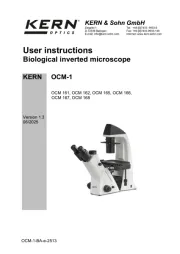
30 Juli 2025
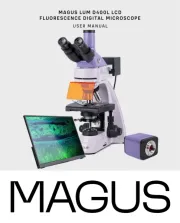
17 Juli 2025
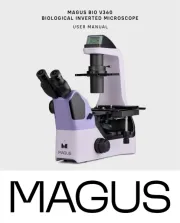
16 Juli 2025
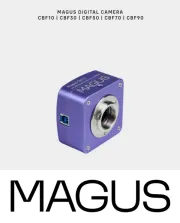
16 Juli 2025
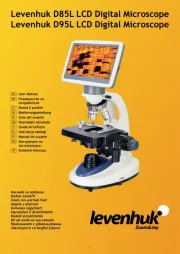
16 Juli 2025

15 Juli 2025
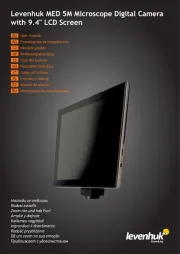
15 Juli 2025

15 Juli 2025

15 Juli 2025
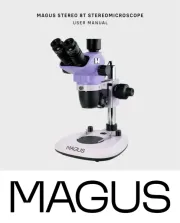
15 Juli 2025